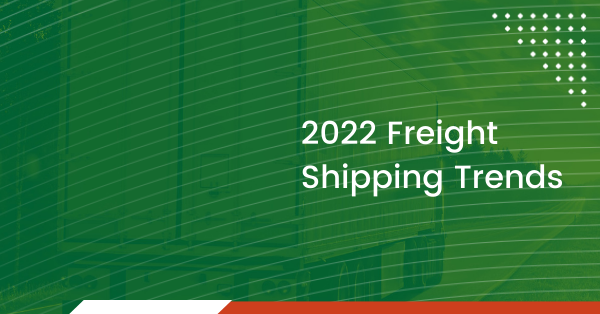As you enter quarter two of 2022, it’s essential to understand the most crucial freight shipping trends impacting the logistics industry. Understanding market trends is one of the best strategies to keep you ahead of your competitors and help you gain and retain customers. Mark Zuckerberg once said, “figuring out the next big trend is telling us what we need to focus on.” If you can figure out the next big trend in your market, you are on the right track to becoming a successful business owner.
Key shipping trends for 2022
PLS has gathered a list of the top 5 key freight shipping trends for 2022 that you should know.
Investing in Technology Is Becoming More Important
Autonomous vehicles and robotics are taking over the freight shipping industry. However, if you are not on top of innovative technology in today’s market, you fall behind competitors.
Autonomous vehicles are a shipping trend making headlines in recent months. One of the largest competitors in the autonomous trucking market is TuSimple, a startup company founded in 2015 dedicated to producing driverless long-haul heavy-duty trucks. After completing an 80-mile test drive in December 2021, TuSimple says they are looking to have their autonomous trucks on the road by 2024.
In addition to autonomous vehicles, robotics are taking over the logistics industry. Smart robotic machines can load and unload freight without human interaction. It allows for more focus on complex tasks and saves time when shipping. Investing in technology right now can propel you ahead of competitors for years to come.
The Capacity Crisis Continues
If you feel like there is a shortage of everything right now, you’re not alone. From lumber, computer chips, potatoes, coins, gas, and other popular commodities, every industry is still feeling the ripple effects of the COVID-19 pandemic.
Not only are products short of hand, but workers are also challenging to find. The United States has been experiencing a truck driver shortage for years before the pandemic, but this issue has grown exponentially in the past 18 months. In 2021, trucking companies suffered a truck driver shortage of over 80,000 drivers. Considering 74 percent of all freight is moved by trucks, this certainly impacted the shipping industry. The labor shortage is affecting every industry. Economists have labeled this period “The Great Resignation” after 47 million workers quit their jobs last year.
Unfortunately, the product and labor shortage will not end anytime soon, so you may want to reconsider your current inventory management strategy. There is a trade-off between risk and cost when it comes to inventory. Holding more inventory is costly but safe. Maintaining less inventory will save you money but increase risk. One trend we are currently seeing in the supply chain industry in 2022 is a shift from a Just in Time (JIT) strategy to a Just in Case (JIC) strategy. The capacity crisis has made inventory less reliable than before, and cutting inventory to reduce costs is no longer the best strategy for all companies.
Increased Shipping Costs Due to Rising Inflation
According to Cass Information Systems, overall domestic shipping rates increased by 23 percent from 2020 to 2021. International rates are climbing even higher, with a 75 percent increase in the average price of a 40-ft ocean shipment container from 2020 to 2021. Unfortunately, economists believe this trend will continue until at least 2023 before making a gradual decline. There is not much you can do to avoid inflation, but you can take some measures to reduce costs:
- Consolidate packaging as much as possible when shipping freight
- Outsource demand by using a third-party logistics (3PL) provider
- Renegotiate contracts
- Ship on off-peak days (typically Fridays and Mondays)
- Creating lasting relationships with suppliers
Push for Sustainability Across the Market
Green logistics, or eco-logistics, is a sustainable practice taken in the logistics industry to reduce the environmental impact of transportation, warehousing, and other logistics practices to create lasting value that balances economic and ecological efficiency. Recent consumer and government demands have urged businesses to become more environmentally friendly. Environmental activists have set the goal of net-zero emissions by 2030, and companies hear their demands.
Michael Bates, global general energy manager at Intel, says, “My hope is that 2022 is the year that the transition to renewable energy starts to take off. It is one of the most important things for our future.” Therefore, it is crucial to recognize that green logistics is where our future is heading. In addition, your dedication to a clean environment will not go unnoticed by customers.
Increased demand for 3PLs
Global third-party logistics companies have been growing in popularity in recent years. Bluewave Consulting estimates a 7.9 percent growth in revenue in the 3PL industry between 2020 and 2027. This growth is driven by increasing demand for effective inventory management, increasing use of e-commerce, growing globalization, trade, and the increase in seaborne trade. As a result, the 3PL industry is booming and is not slowing anytime soon.
As stated, outsourcing demand with a 3PL can help you cut costs. PLS Logistics can help cut your transportation costs by up to 10 percent. Want to see how? Contact us today to get a free quote on your freight!

